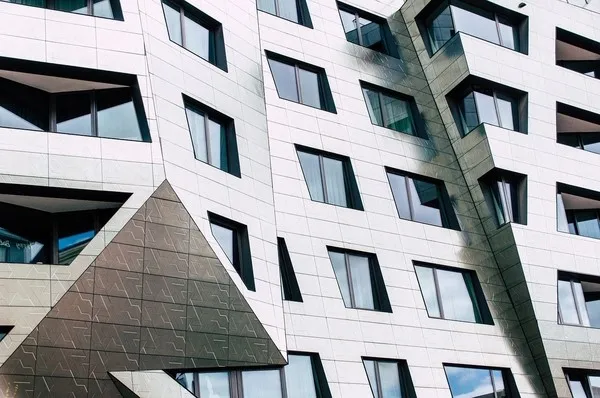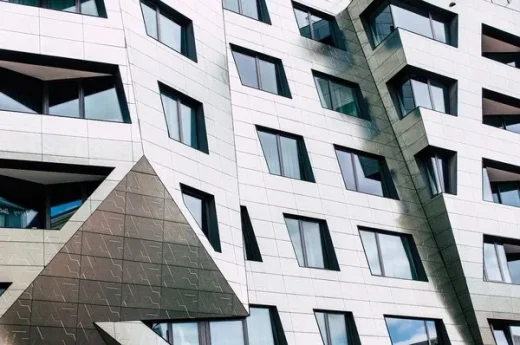The rise of hybrid spaces in modern architecture, From blueprints to bytes, Property interior
The Rise of Hybrid Spaces in Modern Architecture
16 October 2024
The lines between various types of residential and commercial spaces are increasingly blurring as modern architecture embraces hybrid spaces. As the world evolves, so do human needs for environments that can accommodate a wide range of functions. Hybrid spaces are the answer to the growing demand for sustainability and innovation in urban and residential planning. This post details what hybrid spaces are, what drives them, and their impact on cities.
What Are Hybrid Spaces?
Hybrid spaces are architectural designs that merge different functionalities within one location. They can seamlessly integrate work, home, leisure, and retail in a single setting, breaking traditional boundaries that once kept these spaces apart. For example, a modern office building might include residential units, recreational areas, and retail shops, creating a more dynamic and self-sustaining environment.
These spaces aren’t limited to large-scale commercial projects, they are also becoming increasingly common in residential designs. The idea of a home office is no longer a small desk in a corner of a bedroom, but a dedicated workspace that can easily transform into a gym or social space. These kinds of designs cater to a growing desire for versatility, offering tailored environments that can adapt to various needs.
The Drivers Behind Hybrid Spaces
Several factors are driving the rise of hybrid spaces in modern architecture. One of the primary catalysts is the shift toward more flexible lifestyles and work arrangements. With the advent of remote work, the need for a clear division between home and office spaces has become less relevant. People are now looking for environments that allow them to seamlessly transition from work to relaxation, without the need for commuting or switching locations.
Urbanization is another critical factor. As cities become more populated, the demand for multifunctional spaces grows. Hybrid architecture allows urban planners to make the most of limited spaces, ensuring that areas can serve multiple purposes. In this context, hybrid spaces contribute to the efficient use of resources and promote sustainability by reducing the need for separate buildings for each function.
Technological advancements have also played a significant role. Smart technology, for instance, has made it easier to create environments that can adapt to the user’s needs. Lighting, temperature, and layout can be adjusted to suit different purposes, further enhancing the functionality of hybrid spaces.
The Impact on Cities
The impact of hybrid spaces on urban development is profound. Cities worldwide are transforming as architects and developers rethink traditional zoning laws and building regulations to accommodate these multipurpose environments. Mixed-use developments are becoming the norm, where residential and commercial spaces are integrated within the same building block.
An example of this is the growing trend of co-living and co-working spaces. These designs bring together professionals who live and work in the same environment, creating a sense of community while maximizing the use of space. Similarly, shopping malls are no longer just for retail. They are evolving into lifestyle hubs with offices, entertainment zones, and residential units.
How Hybrid Spaces Influence Residential Architecture
The trend of hybrid spaces isn’t just limited to urban landscapes, it’s also making its way into residential architecture. As more people work from home, the need for multifunctional living spaces has grown significantly. Modern homes are being designed to offer flexibility, allowing spaces to serve multiple purposes throughout the day.
For instance, a living room might double as a home office during work hours and a family entertainment space in the evenings. Similarly, an outdoor patio can serve as both a place to relax and a functional workspace. The inclusion of adaptable furniture and smart technology makes these transitions seamless, enhancing the overall living experience.
Homeowners are increasingly seeking out these flexible design options, particularly in regions like Santa Rosa, where space can be a premium. Even functional elements of homes, like garage door repair Santa Rosa, are being incorporated into multipurpose spaces, offering both storage and potential workspace options.
Endnote
The rise of hybrid spaces in modern architecture is a response to the changing dynamics of how people live, work, and interact. By blurring the lines between residential, commercial, and recreational spaces, hybrid designs offer the flexibility and functionality needed in today’s fast-paced world. As we continue to prioritize sustainability and efficiency, these multifunctional spaces will shape the future of urban and residential development, making our environments more efficient and interconnected.
Comments on this guide to The Rise of Hybrid Spaces in Modern Architecture article are welcome.
Architectural Design
Building posts
Resilient Cities Architecture Design
Innovative Architecture Redefining Modern Cities
Building
Residential Architecture Posts
Comments / photos for the The Rise of Hybrid Spaces in Modern Architecture – home decorating style advice article page welcome.






